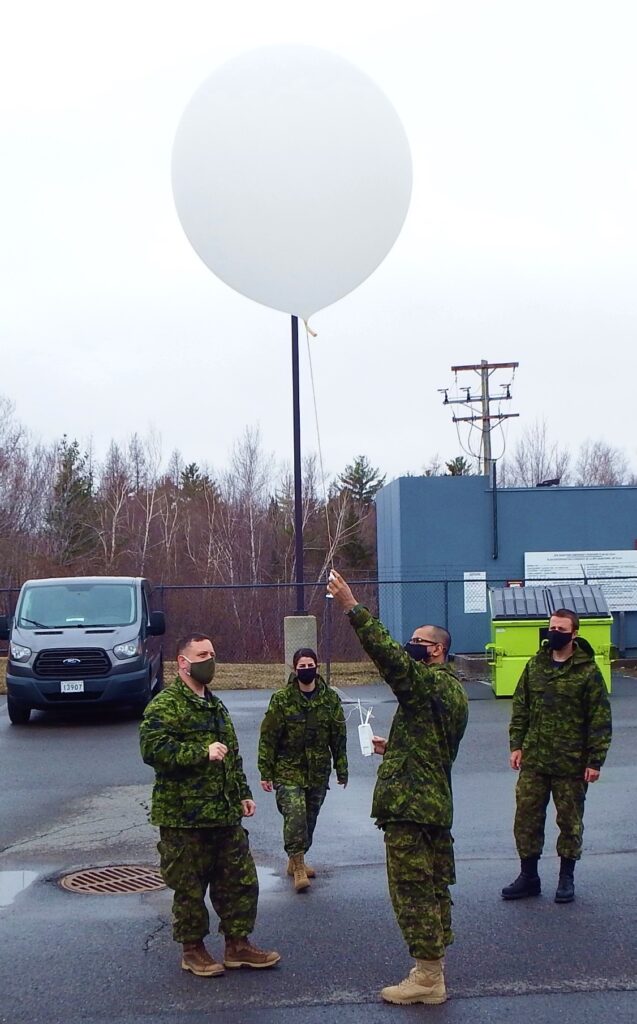MWO Andrew Williams, JMC Plans & Force Development
Often when Meteorological Technicians (Met Techs) are in the field they are asked, “What’s the deal with the giant balloon?” It turns out that the mystery behind the balloon isn’t so mysterious, in fact it makes perfect sense once you understand what’s going on.
BALMET or Ballistic Meteorology, refers to the support Met Techs give to the Royal Canadian Horse Artillery (RCHA) batteries in the field. The high energy projectiles fired by the RCHA travel through the earth’s atmosphere and are affected by air pressure, temperature and winds.
These environmental factors affect the accuracy of the ballistic rounds fired. However, if these factors are known, the shot can be adjusted and the resulting correction dramatically improves accuracy and precision. This is especially important when Artillery units are supporting infantry or other ground based units within a battlespace.
So, how does the “helium filled” balloon collect this data? The answer was actually invented back in World War 2 with the creation of the radiosonde sensor/transmitter. This sensor is suspended from a specially made neoprene/latex weather balloon that is able to ascend to heights exceeding 18 000 – 52 000m (60,000 -173,000ft). Along the way the radiosonde transmits meteorological data back to the surface (temperature, air pressure and winds) via either GPS satellites or a surface based theodolite radio direction finding (RDF) antenna.
Lastly, there is a larger use for weather balloons and that is their contribution to weather forecast modelling. Weather forecast models are extremely complex and use historical weather data to identify trends, and then applies those trends to current weather conditions to predict what will happen over the next few days. Radiosondes are one of many sensor systems used by organizations like Environment and Climate Change Canada (ECCC) and the National Oceanographic and Atmospheric Agency (NOAA) to feed raw atmospheric data into their weather prediction models and inform their weather forecasters of what is happening in the atmosphere at any given time.


